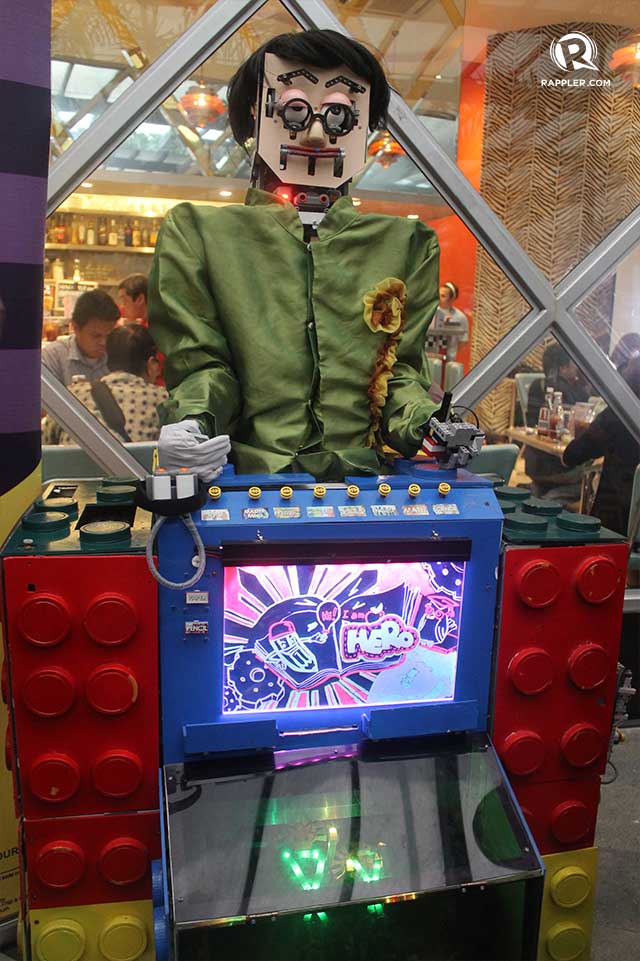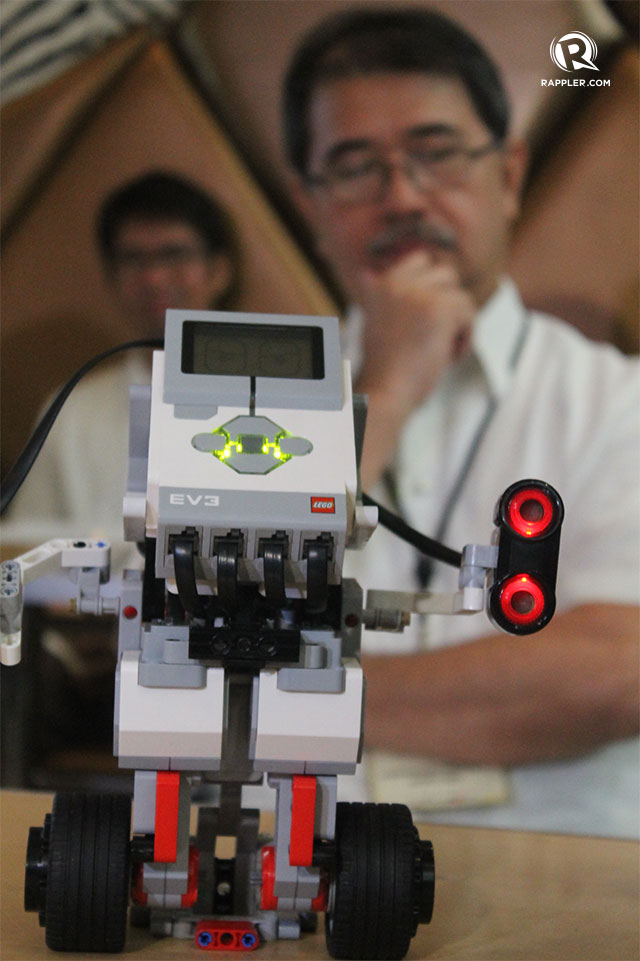SUMMARY
This is AI generated summarization, which may have errors. For context, always refer to the full article.

MANILA, Philippines – Sixteen-year-old Claire Reñosa had a lot to say.
Her sentences were peppered with the phrase “at the same time.” She rarely looked at the cameras, but constantly gazed over the shoulders of the audience packed in a small restaurant in Makati.
She has been a participant of the Philippine Robotics Olympiad (PRO) for the last three years, and was the Junior High School Open Category champion with her two other teammates during last year’s World Robot Olympiad in Malaysia.
Their gold medal-winning robot HERO (or Humanoid for Educational Reinforcement Operation) was inspired by the 2009 CNN Hero of the Year, Efren Peñaflorida, and his Kariton Revolution.
At the launch of the 12th year of PRO last Friday, June 21, she had a lot to say about her experiences with the competition—from the skills and character she developed, down to the simpler joys like flying out to different countries to compete with other high school students.
She seemed too eager as she spoke, maybe due to her excitement for the new participants.
“So to those new participants in this competition, I hope you cherish this chance because not everyone has this [chance]. I hope [all] of us [enjoy] robotics.”
The Philippine Robotics Olympiad

Like Claire, more and more Filipino students are gaining interest with robotics, and the PRO is an annual competition which aims to offer an opportunity for students to explore robots and robotic systems in schools. Every year, grand winners of the PRO represent the country in the World Robot Olympiad.
PRO national organizer Mylene Abiva said they expect over 400 public and private schools nationwide to participate in this year’s national competition. In her estimate, 40% of this number will come from public schools, while the majority or 60% will come from private schools.
“The public schools are now going head-to-head with the private schools. Before, they would feel quite intimidated with the private schools, but now, I believe that with the support of the Department of Education (DepEd), they [can now] focus [more] on the robotics program,” she said.
The PRO’s partnership with the Department of Science and Technology-Science Education Institute (DOST-SEI) started in 2004.
“I felt that the government has more reach with regards to the public schools, which I also want to get involved with,” Abiva said about the partnership.
Together with the DOST-SEI, they will launch a new robotics interschool competition this year called First Lego League Philippines, where students will conduct robot research and present their findings through a robot game.
In the previous years, the PRO has been open to elementary and high school students ages 10 to 16 years old. With the K to 12 law adding two more years to the basic education in the country, Abiva said they are looking to open it for 17- and 18-year-olds.
Robotics in the classroom
Along with the PRO, Abiva also launched the Philippine Robotics Academy (PRA) through the non-profit organization FELTA Multi-Media Inc.
The PRA is an integrated robotics curriculum provided to schools, as well as textbooks, kits, and computers to engage students in robotics education.
“It’s a school within a school. We help them, we provide them with the curriculum, and it’s an option of the school whether to integrate it with computer classes or Physics class or general science classes for [the] elementary level,” she said.
So far, only four schools in the country integrated the Academy in their curriculum: Claret School of Quezon City, Dr. Yanga’s College Inc., MCA Montessori School-Taguig, and St. Michael’s College of Biñan.
Dr. Lourdes Almeda Sese, president of St. Michael’s College of Biñan, take pride with the school as the first Robotics Academy in Laguna.
On their first year of implementation, they dedicated one hour of the weekly, 3-hour Computer class for the robotics curriculum. It was only implemented in the last two quarters of the school year, but the grades 4-7 students were quick learners.
“Starting from almost [no] knowledge, they have been able to move blocks for the first year of implementation, and that is only after…two quarters,” Robotics Club adviser Karla Maranan shared.
The teachers also observed a change of learning behavior among the students. “We really saw the change of behavior… before, they just get to be passive [in] class, but now they try to move and work and compute,” Basic Education Director Elena Manalo said.
The PRA is only being offered to private schools for now, although Abiva said they presented a grade 7 robotics curriculum to DepEd. It is an experimental program for the Science-oriented high schools nationwide.
“It started last year, but we are not sure how many schools have implemented,” she said.
‘Robotics is the future’
DOST Undersecretary Fortunato De La Pena said robotics is one of the platforms the country can depend on.
“Local technology works, so we will try to apply that to our local condition and we are aiming at what our secretary says a Smarter Philippines,” he added.
Last 2012, the DOST launched the Smarter Philippines campaign, a program that will use Information and Communication Technology (ICT) as “an enabling tool to provide more efficient and reliable services in some priority industries in the country”.

DOST-SEI Director Filma Brawner said programs like the PRO attract more students to take up science and technology (S&T) courses, which will hopefully lead to S&T careers. These programs aid schools where teaching science remains to be a challenge to educators.
“You can use robotics of course in areas like manufacturing, health areas, and so on. In terms of agriculture, you can also use robotics,” she added.
Abiva, on the other hand, wants both parents and students to see that there are jobs in the country when you go into any of the S&T careers.
“These students are the critical thinkers that the country needs for us to be a developed a country. We have so little scientists here in the Philippines. This is just a stepping stone that we are taking. It’s not a solve-all pill that we’re giving, but at least it’s a step for us to have hope for our country,” she said.
In Abiva’s Philippines, robotics is the future. It will be a country where robots do the menial jobs, while Filipinos do the real thinking, interacting, socializing, and researching. It will be a country where both can co-exist.
But for her, that kind of tomorrow will only happen when smart thinking starts today. – Rappler.com
Add a comment
How does this make you feel?
There are no comments yet. Add your comment to start the conversation.